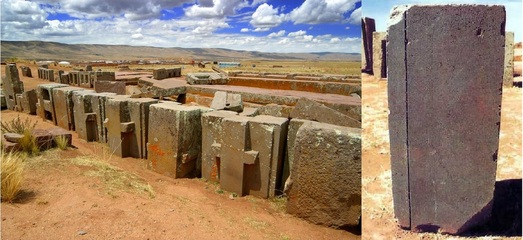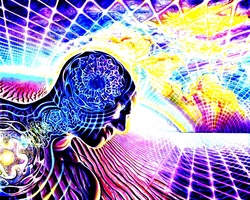
Pictured here are some of the famous H-blocks found strewn around the site. These are just a few examples of some unusually fine precision engineering. Note the block on the right wherein a linear groove was carved into the stone. It runs about a quarter inch square, and is perfectly linear. These stones were carved at least 1500 years ago (based on carbon dating of soil samples beneath the stones). In fact, the blocks were so precisely cut as to suggest the possibility of prefabrication and mass production, technologies far in advance of the Tiwanaku’s Incan successors hundreds of years later. Simply put, the technology to create these architectural marvels did not exist at the time.
